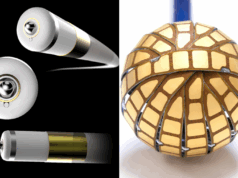A study published ahead of print in the Annals of Internal Medicine suggests that implantable cardioverter defibrillator (ICDs) with three or more years of estimated remaining battery life can be reused, delivering life-saving therapy without increasing the risk of complications.
Behzad Pavri, Thomas Jefferson University Hospital, Philadelphia, USA, and others wrote: “nowhere are disparities in healthcare more evident than in the rates of ICD use around the world. Rates of new ICD implantation are less than 1 per million persons in many Asian and South American nations, compared with 434 new ICD implantations per million persons in the United States.” They added that the cost of ICD therapy is one of the barriers to its use in poorer nations and claimed that a possible solution would be to reuse explanted ICDs. They commented: “Many ICDs are explanted in the United States for upgrades or because of infections. Such devices often have substantial remaining battery life but are usually stored locally or discarded or sometimes returned to the manufacturer for product analysis.” Also, according to the authors, about one fifth to one third of ICDs retrieved from funeral homes may have sufficient battery life that would enable them to be reused. Pavri et al stated: “Since 2004, we have collected ICDs with clinically useful remaining battery life and sent them to India for resterilisation and reimplantation in indigent persons who would otherwise be unable to afford them. We report here on our preliminary experience over seven years (2004–2011).”
The reused ICDs in the study were obtained from deceased patients prior to burial or cremation (after funeral directors obtained verbal consent from patients’ relatives) and from live patients whose ICD had been explanted (verbal permission from the patient was obtained whenever possible, but this could not always be verified). The mean time from initial implantation to explanation was 522 days (ranging from 0 to 2,163 days).
Pavri et al reported that after explanation, ICD were cleaned with saline, sealed in biohazard bags, and interrogated and reprogrammed (ie, all identifying patient and lead information was deleted). They added that the device resterilisation protocol involved several steps, including the device being immersed in hydrogen peroxide (for 10 minutes), then immersed in povidone-iodine (for two minutes), and being sterilised in an automatic ethylene oxide gas machine.
A total of 81 patients, who were only offered a reused ICD if they could not afford to pay for a new device, received 106 explanted devices in the study period, but follow-up data was only available for 75 patients as six patients were lost to follow-up. Pavri et al reported: “Appropriate shocks were delivered by 46 of 106 devices in 34 of 81 patients. In addition, anti-tachycardia pacing only (without shock) was delivered for monomorphic ventricular tachycardia by 18 of 106 devices in 10 of 81 patients. In total, 64 of 106 devices delivered appropriate therapy.” They added that 22 patients received a second device and three received a third device after the prior one reached elective replacement voltage. No infectious complications occurred around the time of implantation or during follow-up.
Commenting on their findings, Pavri et al claimed that their report confirmed the “feasibility of reusing ICDs”. They added that the strategy could be expanded if it is proven safe in additional studies. However, they said that several factors need to be considered before a more systematic approach to reusing ICDs became a reality, including having a “living will for devices” at the time of implantation or early follow-up, ensuring that donating patients, retrieving physicians, and device manufacturers were free from liability, and having receiving patients sign specific consent forms that outline the risks of receiving a resterilised device. Furthermore, as financial motives would “negate the purpose of this effort”, the authors claimed that safeguards should be put in place to ensure that the reuse of ICDs remained a purely charitable endeavour without financial gain. They reported: “Grace, generosity of spirit, and political savvy-not profit-should prevail.”
They concluded: “If the safety of this strategy is confirmed in larger studies, there could be important humanitarian and economic effects for the citizens of low- and middle-income nations.”
Pavri told Cardiac Rhythm News: “It is our hope that this initial data will generate sufficient interest to start a prospective trial. If such a trial confirms the findings of our study, then there is real potential to help underprivileged patients all over the globe.”









